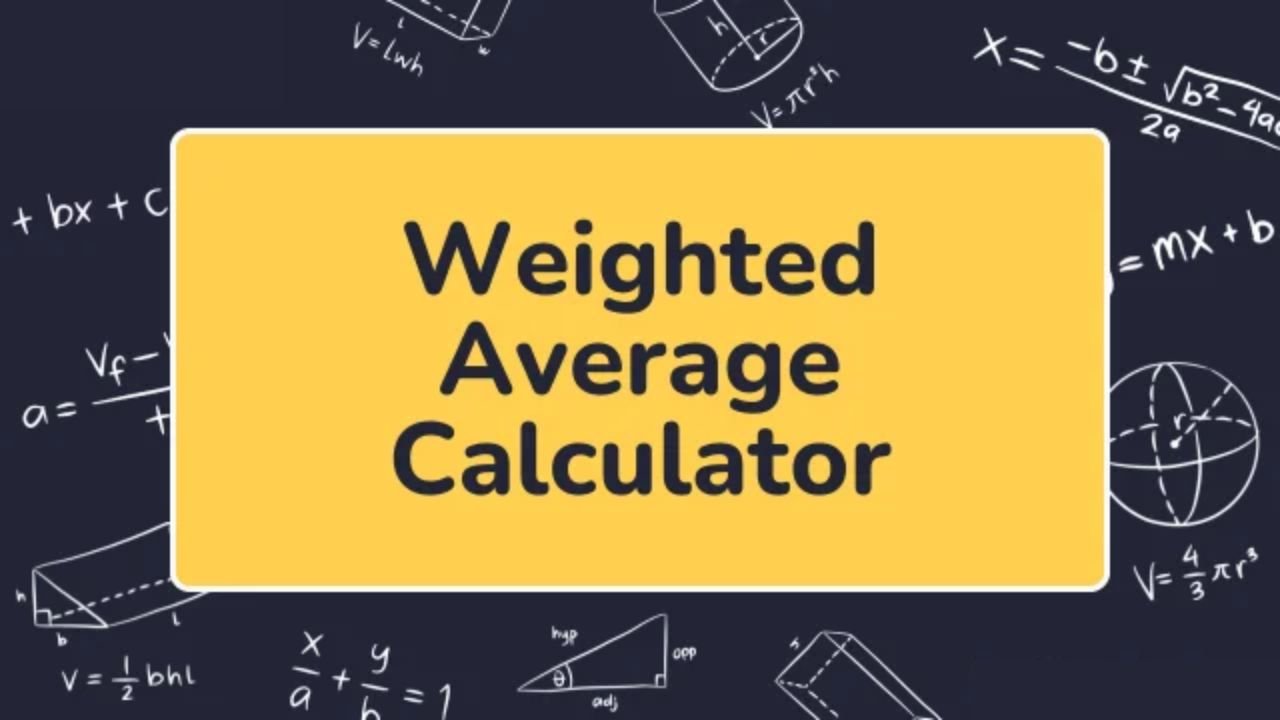In Excel data analysis doesn’t necessarily require calculations or formulas all the time; understanding the concept of weighted average is crucial but often obscured by approaches, in guides that delve into technical details straightaway. This guide takes a route by focusing on explaining the essence of weighted average in Excel structurally without relying on formulas or numerical data. If you’re a student or a professional, in any field. Whether its analytics or management. Or just someone looking to understand your Excel data this guide in language will explain the significance of a weighted average and how to apply it practically using Excel.
Let’s start by delving into the concept of an average; Unlike an average that treats each value equally a weighted average gives significance to individual values by assigning weights to them.
In a scenario where certain items, in a list hold importance than others come to mind. Like when determining a students grade where not all assignments carry equal weight. It’s clear that a final exam could be weighted heavier than a simple quiz question, within the grading scheme to provide a truer reflection of the student’s performance.
The Distinction Between Regular Average and Weighted Average.
Understanding the importance of a weighted average becomes clearer when you contrast it with an calculation method. In an average calculation method, all the values are summed and then divided by the count of values; each value holds equal weight in this scenario.
When calculating an average, it considers the significance of each value, towards the outcome. This becomes crucial in scenarios where importance is not evenly spread out like in levels of importance quantities or inputs, within business and educational settings.
Where Does the Concept of Weighted Average Come into Play in Situations?
This concept becomes clearer when applied to interpreting data, in real life scenarios that you may come across while working with Excel spreadsheets.
Determining overall grades
Teachers and school administrators frequently determine students’ overall grades by assigning weights to components such, as homework and exams while giving less importance to participation scores on the whole picture of a student’s performance can be depicted in Excel by organizing data based on assignment categories and their respective weights.
In Finance
In the field of finance sometimes portfolio returns are computed by considering the impact of each investment, towards the sum. A larger investment in an asset holds sway over the outcome. Excel could potentially list out investment categories along, with their values and proportional significance.
Evaluating Contribution
When monitoring sales across regions and noticing that certain regions play a role, in the total revenue generated than others do. It’s crucial not to treat them all the same way. Evaluating performance using weighted averages can paint a picture by factoring in the actual revenue contribution of each region.
In Survey
When reviewing feedback from customers or survey responses relevant answers may hold significance depending on how they are mentioned or the importance of the customer segment they represent. The use of weighted averages aids, in presenting a summary of the results.
Monitoring Progress
Tasks, within a project can differ in terms of their complexity and time requirements. Monitoring progress, through a weighted average can provide an accurate reflection of the project’s completion status.
How to calculate Weighted Average
Imagine you don’t have to rely on formulas to grasp the concept of an average; envision Excel, as your piece of paper where you can easily arrange and visually assess data immediately. Here’s a simple way to mentally map out an average.
Column one denotes the items or categories, under evaluation (, for example products regions students’ tasks). Column 2 contains the data related to each item such, as scores, sales figure, returns and quantities. In Column 3 of the dataset are the weights that show how important each value is – considering factors, like its significance level and frequency or size.
Now picture each row as a piece of information to consider individually on its merits for analysis purposes. To understand it deeply from a viewpoint—mentally match up each value with its significance or importance, in the overall context. This matching process is crucial as it helps you mentally grasp the relevance and impact of each value, within the framework.
When you’re trying to explain an average, in Excel to someone who’s not familiar, with numbers or formulas consider using real world comparisons.
In a classroom scenario, like when a teacher assesses students performance based on a project and daily homework assignments; the emphasis is placed on the project’s significance over regular homework tasks. If a student excels in the project but performs averagely in homework assignments the overall grade should acknowledge the outstanding final project performance. Weight averaging facilitates this adjustment.
When you purchase varying amounts of products at prices, in a shopping scenario like buying apples than oranges for instance. The final cost should accurately reflect the items you purchased in larger quantities rather than those with lower quantities bought at different prices which would have a lesser impact on your total bill due, to the weighted average concept coming into play.
In a workplace scenario, like a project setting it is common for certain tasks to require time compared to others. Evaluating progress in situations it would be reasonable to assign significance to tasks that are longer in duration and more intricate rather, than treating all tasks equally.
How to Approach Weighted Mean, in Excel Spreadsheets
When going through or organizing Excel spreadsheets with weighted information¸ here’s a guide to help grasp the concepts. Are all the values equally significant. Should some receive focus? Are there any columns that show amount or quantity of items needed urgently or how often they occur? Could you organize the information into groups based on categories that have varying levels of significance?
In Summary
Understanding weighted averages in Excel without relying on highlights that Excel serves as a tool, for interpretation, then just calculation alone. With Excels capabilities you can arrange data logically categorize information visually and draw comparisons effortlessly without engaging in expressions.
When you understand where weighted averages come into play and how they shape results it helps in organizing your data revealing findings and presenting conclusions clearly—particularly when summarizing information for individuals uninterested, in the underlying mathematical details. Bizinfograph offers ready-to-use dashboard templates on Finance, Sales, HR and Manufacturing.



